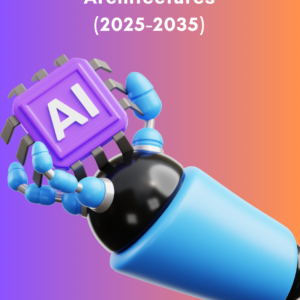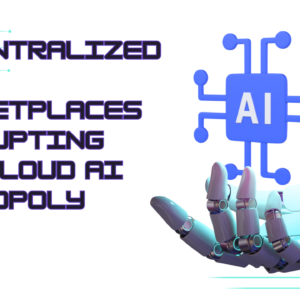1. Executive Summary:
- Key Findings: Overview of AI capabilities across leading data center providers (Microsoft, Google, Amazon).
- Market Projections: AI-driven cloud services market size forecast through 2035.
- Trends: The growing role of AI in cloud environments, highlighting the intersection between enterprise AI demands and infrastructure capabilities.
2. Overview of AI Capabilities in Major Data Center Providers:
- Comparison of Offerings: AI services by Microsoft Azure, Google Cloud, Amazon Web Services (AWS).
- Core AI Technologies:
- Machine Learning (ML)
- Natural Language Processing (NLP)
- Computer Vision
- Unique Features: Specializations of each provider—e.g., AWS’s SageMaker, Google’s TensorFlow, Azure’s Cognitive Services.
- AI Ecosystems: Partner networks, marketplace integrations, and AI model hubs.
3. Client Adoption of AI Technologies:
- Company Size and Industry:
- Enterprise: Financial services, retail, and manufacturing leading AI adoption.
- Mid-Market: Growth in healthcare, media, and e-commerce.
- SMBs and Startups: Focus on AI-driven analytics and automation tools.
- Sector-Based Adoption:
- Finance: AI for fraud detection, trading algorithms, and customer service automation.
- Healthcare: Diagnostics, AI-enabled drug discovery, and patient management systems.
- Retail: Personalization engines, inventory management, and recommendation systems.
- Manufacturing: Predictive maintenance, robotics, and smart factories.
- Geographical Trends: AI adoption differences across North America, Europe, and APAC regions.
4. Purpose and Use Cases for AI in Cloud Environments:
- Machine Learning and Predictive Analytics: Predictive models for finance, manufacturing, and marketing.
- NLP: Applications in chatbots, virtual assistants, and document processing.
- Computer Vision: Image recognition for security, healthcare diagnostics, and industrial applications.
- Robotics and Autonomous Systems: Deployment in manufacturing and logistics.
- IoT and Edge AI: Real-time data processing and analytics for connected devices.
5. Monetization Strategies for AI Services:
- Pricing Models:
- Pay-as-you-go: Usage-based pricing models for AI tools.
- Subscription: Tiered services based on customer size or AI capabilities.
- AI Marketplaces: Selling pre-built AI models and solutions.
- Revenue Streams: Upselling AI services, value-added consulting, and managed AI services.
- Partner and Developer Ecosystems: Revenue sharing models for third-party AI solutions.
6. End-User Applications and Solutions:
- Customer Service Automation: AI chatbots, virtual agents, and self-service tools.
- Security and Fraud Detection: Real-time threat analysis, behavioral analytics, and risk assessment tools.
- Supply Chain Optimization: AI for demand forecasting, inventory management, and logistics.
- Autonomous Vehicles and Robotics: Integration of AI with machine learning algorithms for vehicle autonomy.
- Healthcare: AI-driven diagnostics, personalized treatments, and operational efficiencies.
7. Investment in AI Infrastructure:
- Capital Expenditure: Growing investments in AI-specific hardware, including GPUs, TPUs, and custom silicon.
- AI Chips: Development of custom processors for AI workloads (e.g., Google’s TPUs, AWS’s Inferentia).
- Energy Efficiency: Data center sustainability efforts—AI-driven cooling and energy management.
8. Competitive Landscape and Market Share Analysis:
- Strengths and Weaknesses: Comparison of AI capabilities across Microsoft, Google, AWS.
- Emerging Players: Impact of smaller, specialized cloud providers entering the AI market.
- Partnerships: Collaborations between major cloud providers and third-party AI companies.
9. Regulatory and Ethical Considerations:
- Data Privacy: Compliance with global regulations (GDPR, CCPA) and how cloud providers are managing customer data.
- Ethical AI: Approaches to fairness, transparency, and bias mitigation in AI models.
- Cross-Border Regulations: Impact of data localization and cross-border AI services.
10. Future Outlook (2025-2035):
- AI-as-a-Service Market Growth: Projected growth rates for AI services in cloud environments.
- Emerging Technologies: Quantum computing, edge AI, and federated learning.
- Shifting Client Demands: Anticipated changes in enterprise AI adoption and cloud service requirements.
11. Challenges and Opportunities:
- Talent Acquisition: The growing demand for AI talent and how data center providers are addressing this.
- Customization vs. Scalability: Balancing bespoke AI solutions with scalable cloud offerings.
- Bias and Fairness in AI: Mitigating algorithmic bias while improving AI accuracy and usability.
12. Case Studies:
- Successful Implementations: Real-world examples of large enterprises leveraging cloud-based AI services for transformative results.
- Vertical-Specific Solutions: Tailored AI solutions for sectors like healthcare, finance, and retail.
- ROI Analysis: Evaluation of return on investment (ROI) from AI service adoption across different industries.
13. Strategic Implications for Investors:
- High-Growth Areas: Sectors and technologies driving AI infrastructure investments.
- Risk Factors: Key risks associated with cloud AI adoption (e.g., data security, AI explainability).
- Valuation and Long-Term Projections: Financial models forecasting growth and opportunities in AI-driven cloud services.
14. Conclusion and Recommendations:
- Key Takeaways: Summary of findings and strategic recommendations.
- Actionable Insights: Guidance for investors, cloud service providers, and enterprises on leveraging AI capabilities.
- Long-Term Strategy: Roadmap for enterprises to integrate AI services and remain competitive in a fast-evolving landscape.
15. Appendices:
- Glossary of AI and Cloud Computing Terms.
- Detailed Market Data and Forecasts.
- Survey Methodology and Respondent Demographics.





